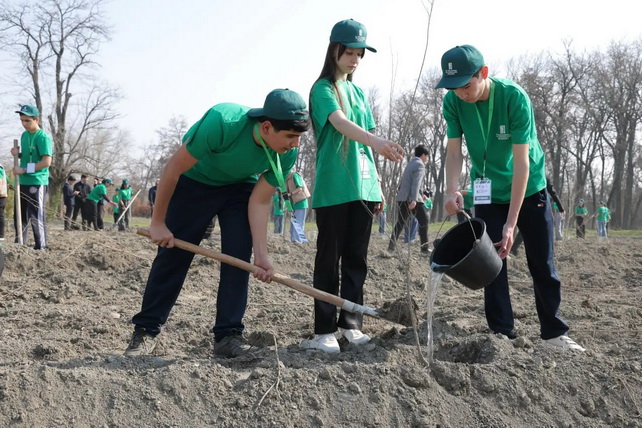
"Garden of Young Ecologists" established in Zarafshan National Park
"Garden of Young Ecologists" established in Zarafshan National Park
Tashkent, Uzbekistan (UzDaily.com) — A large-scale environmental campaign took place in Zarafshan National Park, which is managed by the Ministry of Ecology, Environmental Protection, and Climate Change.
As part of the nationwide "Yashil Makon" (Green Space) initiative, the "Garden of Young Ecologists" was established, where participants planted 600 saplings of elm, Turkestan elm (guzhum), and Crimean pine.
The event was organized by the Ministry of Ecology, the regional department of ecology, and the regional prosecutor’s office. It brought together young ecologists—participants of the "Do You Know Environmental Laws?" competition—as well as activists passionate about nature conservation. The campaign emphasized the crucial role of greening efforts in addressing global environmental challenges, including climate change and air pollution.
Participants also took part in a guided tour of Zarafshan National Park, where they learned about the significance of protected natural areas in preserving biodiversity. Young ecologists were reminded of the importance of responsible attitudes toward flora and fauna, as well as the individual contribution each person can make in safeguarding natural heritage.
Uzbekistan’s youth are increasingly engaged in solving environmental issues. Eco-activists across the country, including in Karakalpakstan, are putting forward initiatives, participating in international events, and contributing to environmental protection. The "Do You Know Environmental Laws?" competition is a vivid example of growing environmental awareness and literacy among the younger generation.
The national stage of the competition among secondary school teams is currently underway in Samarkand, while the next round, featuring teams from vocational education institutions, is scheduled for 17–19 March in Khorezm region.
According to organizers, the establishment of the "Garden of Young Ecologists" is not only a contribution to regional greening efforts but also an essential step in cultivating ecological culture among youth, who are already demonstrating their commitment to active environmental action.